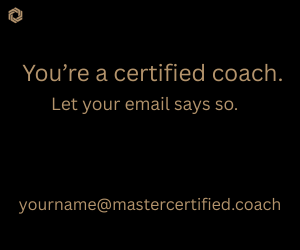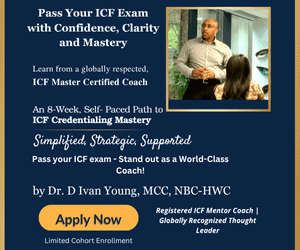Coaching is about presence, clarity, and deep connection.
But often, your energy is spent managing everything outside the session. And while you’re holding it all together, your clients feel what’s missing. Subtle cracks quietly shape how much trust and ease you bring to work.
Here’s where things start to slip:
- Your first impression feels inconsistent.
Generic links, clunky emails, and off-brand tools undercut the professionalism you bring. Clients notice — even if they never say a word.
- Friction replaces flow.
If clients struggle to self-schedule, join easily, or interact in their language, they start with resistance, not readiness.
- Your workflow drains your energy.
You’re juggling notes, reminders, calendars, and payments — instead of using that energy to improve coaching sessions with full presence.
- Your insights are scattered, and so is your time.
Conversations live in notebooks, chat threads, and half-written docs — never where you need them, when you need them. You’re chasing information instead of clarity, and your sessions reflect the scramble
These aren’t small inefficiencies. They dilute your presence, cloud your professionalism, and limit the transformation of your coaching client experience.
But what if every part of your practice — from first touch to final follow-up — felt precise, effortless, and built around how you want to coach?
Top coaches don’t just manage their time — they protect their presence. They structure, run, and capture client conversations with intention. They reduce friction with smart coach productivity tools that enhance their presence, not distract from it.
I’ve coached high-performing sales teams around the world, and what I’ve learned — from SaaS firms to solo consultants — is this: Real impact doesn’t come from hustle; it comes from structure.
So, here are four practical strategies to help you build that structure — strategies that protect your time, elevate your presence, and support scalable growth without losing your personal touch.
Create Repeatable Systems
Great coaching isn’t just what happens in a session; it’s how the entire journey feels. You want to use consistent, client-centered strategies that shape every phase of their experience, including:
- Setting clear expectations during onboarding.
- Creating space for reflection between sessions.
- Revisiting goals regularly.
- Using structured frameworks to guide conversations.
These practices help your clients feel seen, supported, and anchored in progress. Plus, if every session prep, follow-up, or client onboarding is slightly different — it’s going to burn you out.
Systems can enhance your workflow and your client’s journey, and systems enable the strategy behind the scenes to turn a series of calls into a transformative coaching relationship.
Consider standardizing where you can, such as:
- Using session prep templates.
- Automating reminders and check-ins.
- Creating onboarding workflows (e.g., intake form, welcome email, expectations documentation).
- Batching follow-up writing once per week.
Protect Your Focus With Clear Boundaries
Do you feel like you are trying to do everything in real time like reply to reschedule emails between sessions, follow up late at night, or prep on the fly?
Protect your time and focus with clear boundaries. Here are a few things you can try:
- Set communication windows (e.g., responding to client messages once per day).
- Leave 10–15 minutes of transition time between sessions.
- Pre-schedule your session prep time at the beginning of the week.
These small shifts help you stay mentally sharp and emotionally available for your clients — instead of constantly “context switching.”
Centralize Your Insights
If your insights live in five tools — or worse, five notebooks — you’ll always be scrambling. Plus, searching through different tools can be a huge time and energy drain for you.
Imagine every session you have is automatically transcribed, summarized, and organized. You’re not flipping through notes or wondering where you left off. You simply review a quick summary and step right back into the flow — no mental gymnastics.
And your client? They see the structure, the decisions, the momentum.
Options to centralize your insights include:
- A simple CRM or spreadsheet that logs session notes, next steps, and goals.
- Note-taking templates and software.
- AI-enabled tools that transcribe and summarize sessions.
With some of the currently available tools on the market, you can pull up a transcript history for a single client, across months, and generate a visual report of their progress over time. Plus, session summaries can be automatically prepared not just for you, but also for your clients. Shareable insights, key discussion points, and AI-generated action items can help you and your clients stay aligned, clear, and focused on what’s next.
Use Technology Thoughtfully
In my coaching work with B2B sales teams and the use of conversational AI platforms, I’ve learned that what appears to be “tech efficiency” on the surface is a form of presence protection. The right systems don’t just save time — they create the space I need to coach with clarity, listen deeply, and deliver structure my clients can return to again and again.
And that’s not just true for me — it’s true for any coach looking to grow without sacrificing depth.
Your goal shouldn’t be about having “more tools” — it should be about having a system that supports your coaching style best by:
- Simplifying your workflow.
- Reducing friction for your clients.
- Enhancing your ability to deliver meaningful coaching.
Some coaches get there with a streamlined mix of tools. Others, like me, turn to platforms that bring it all into one place.
The System That Works for Me
In my pursuit of having the best system for me, I tried just about every major platform available — searching for a setup that supported both structure and presence. But after MyMeet.io became an ICF Business Solutions Partner, I explored the platform — and it turned out to be the exact fit I didn’t know I was looking for. For my practice, it offered the clarity, consistency, and automation I needed — without compromising the coaching experience I worked hard to build.
When I integrated my frameworks, transcripts, notes, and operations into a single cohesive system, the impact was immediate: a 50% reduction in admin time and a 2.5 increase in revenue leverage.
I found this system allowed me to scale my thinking, preserve the nuance of each conversation, and deliver clarity not just to me, but also to my clients.
With MyMeet.io:
- Your branded booking page lives on your domain.
- Clients experience a localized, frictionless journey in their language.
- Your dashboard handles it all — scheduling, conducting meetings, payments, AI insights, and session history — saving valuable time and protecting your presence.
- Sessions are transcribed and summarized automatically, giving you and your clients instant clarity.
- Weekly time reports show where your hours go, what’s optimized, and what needs attention.
Final Thought
Whether you use MyMeet.io or your own tech stack, the principle remains the same: Your systems should serve your coaching — not the other way around.
With a system that works for you, you can:
- Automate what drains your energy.
- Streamline chaos behind the scenes.
- Create space to show up fully — every time.
And when that happens, clients feel the difference. They trust you before you even speak.
You don’t need to overhaul everything at once to start feeling more focused and less fragmented. Pick one area to simplify this week — your session notes, your onboarding, your prep time — and start building a system around it.
You’ll start to find that when your practice runs with more clarity, your coaching becomes more powerful.
Disclaimer
The views and opinions expressed in guest posts featured on this blog are those of the author and do not necessarily reflect the opinions and views of the International Coach Federation (ICF). The publication of a guest post on the ICF Blog does not equate to an ICF endorsement or guarantee of the products or services provided by the author.
Additionally, for the purpose of full disclosure and as a disclaimer of liability, this content was possibly generated using the assistance of an AI program. Its contents, either in whole or in part, have been reviewed and revised by a human. Nevertheless, the reader/user is responsible for verifying the information presented and should not rely upon this article or post as providing any specific professional advice or counsel. Its contents are provided “as is,” and ICF makes no representations or warranties as to its accuracy or completeness and to the fullest extent permitted by applicable law specifically disclaims any and all liability for any damages or injuries resulting from use of or reliance thereupon.
Authors
Sponsors
Sorry, we couldn't find any posts. Please try a different search.
Post Type
Blog
Audience Type
Experienced Coaches, External Coaches, New Coaches, Professional Coaches
Topic
Business Development
Related Posts
The Executive Coaching Blueprint: Positioning, Pricing, and Performance
Transitioning from corporate to coach can feel like uncharted territory for many…
Why Coaches Need Other Coaches
Setting the Foundation When you’re learning about the field of coaching while…
Expanding Coaching Possibilities With the Coaching Spectrum Framework™
When I discovered coaching 14 years into my career as an occupational…








